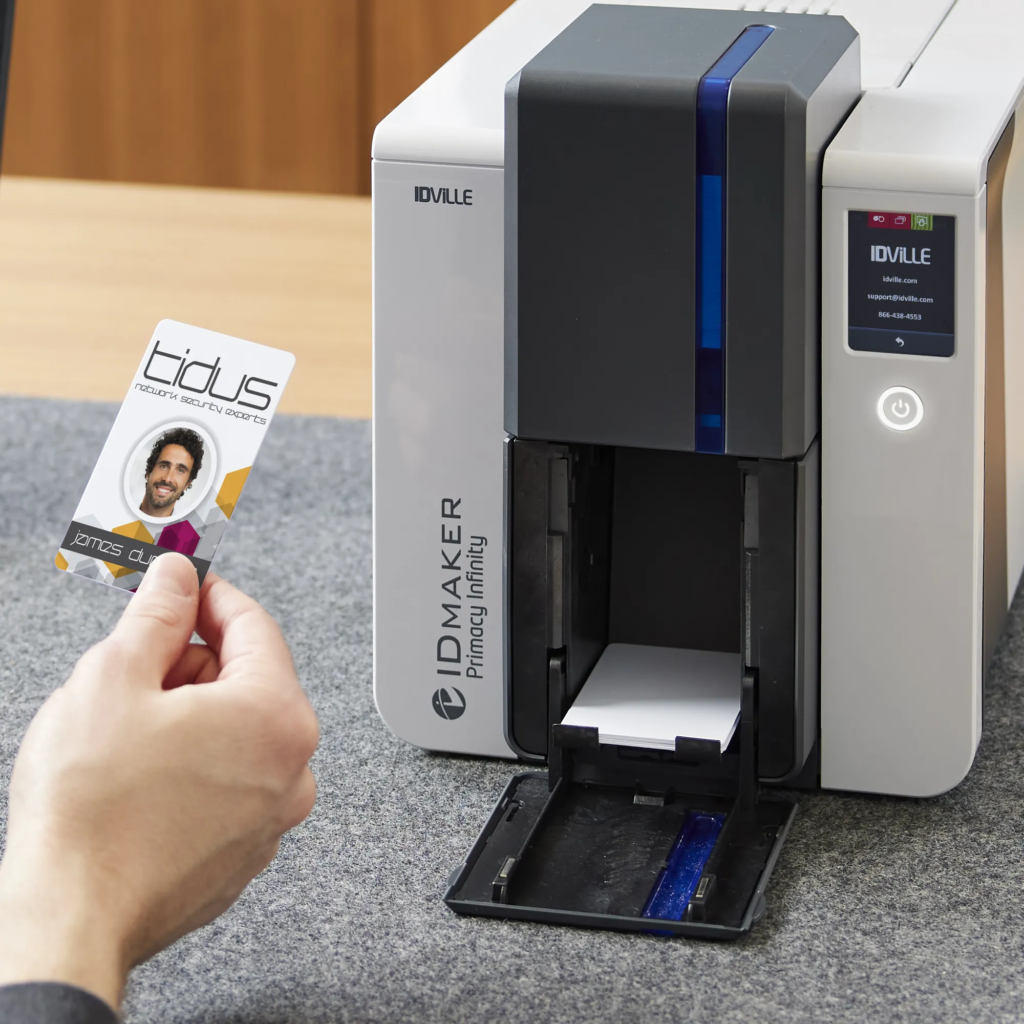
How Does A Card Printer Ensure High-Quality Custom Card Printing?
In today’s world, it’s hard to picture life without the cards we use. We carry cards for ID, loyalty programs, event access, and more. These small yet essential items are part of our daily routines, but what many don’t realize is the intricate process behind their creation. Producing high-quality, custom-printed cards requires a blend of advanced technology, precision engineering, and unwavering attention to detail. At the heart of this process is a card printer, which seamlessly combines cutting-edge features with user-friendly workflows to deliver exceptional results. In this blog post, we’ll dive into how these devices work and why they’re indispensable in modern card production.
Core Technologies of Card Printer
High-quality custom card printing starts with the printer’s core technology. Modern card printers use two primary methods: dye-sublimation and retransfer printing. Dye-sublimation applies heat to transfer dye onto a card’s surface, producing vibrant colours and smooth gradients. Retransfer printing first prints images onto a film, which is then bonded to the card. This method excels at edge-to-edge printing and works well with textured or uneven surfaces.
These technologies ensure sharp details, consistent colour reproduction, and resistance to fading. For example, a card printer using dye-sublimation can achieve a resolution of 300 dpi or higher, making even small text legible. Advanced printers also support dual-sided printing, reducing production time for complex designs. By leveraging these technologies, businesses can create professional-grade cards that align with their branding and security needs.

Superior Material Compatibility
The quality of custom card printing depends on the printer’s ability to handle diverse materials. Card printers are designed to work with PVC, composite, and even eco-friendly biodegradable cards. They accommodate varying card thicknesses, typically ranging from 0.25 mm to 0.76 mm, ensuring compatibility with global ID card standards.
Specialized printers also support embedded features like holographic overlays, magnetic stripes, or smart chips. For instance, a card printer equipped with a lamination module can apply protective layers to prevent scratches and UV damage. This versatility allows organizations to produce everything from simple membership cards to high-security access badges. Material adaptability ensures that every card meets functional and aesthetic requirements.
Color Accuracy and Consistency
Consistent colour reproduction is critical for branding and visual appeal. Card printers achieve this through precise colour management systems. Many devices use CMYK (Cyan, Magenta, Yellow, Black) ribbons with additional resin or clear panels for overlay protection. Advanced models include spocolouror ribbons for Pantone-matching, ensuring corporatcoloursrs are replicated accurately.
Built-in calibration tools automatically adjust print settings based on ribbon type and card material. For example, a card printer might optimize heat levels to prevent colourolor bleeding on glossy surfaces. Real-time monitoring systems detect and correct alignment issues during printing. This attention to detail guarantees that every batch of custom card printing maintains uniformity, even across large volumes.

Robust Durability and Longevity
Cards produced by modern card printers are built to last. Dye-sublimation printing embeds ink beneath the card’s surface, making it resistant to abrasion and chemicals. Retransfer printers add a protective overlay, further shielding the design from wear. These features are essential for ID badges used daily or loyalty cards handled frequently.
Printers also support lamination options for added durability. A card printer with a lamination module can apply a 0.1 mm glossy or matte layer, extending the card’s lifespan by up to five years. For high-traffic environments like hospitals or factories, this durability ensures cards remain functional and legible over time.
Card Printer increase printing efficiency
Efficiency is key in high-volume custom card printing. Card printers integrate with intuitive software that simplifies design and data management. Platforms like Magicard or Zebra Card Studio allow users to import templates, encode smart chips, and batch-print cards with variable data.
Automated features reduce manual intervention. For example, a card printer can auto-detect ribbon types and adjust settings accordingly. Some models include built-in encoders for contactless RFID chips, streamlining the production of smart cards. These tools minimize errors and speed up turnaround times, making large-scale card issuance manageable for small teams.

Security Features for Sensitive Applications
Security is a top priority for ID cards and access badges. Card printers incorporate anti-counterfeiting technologies such as UV ink, micro text, and guilloche patterns. These features are nearly impossible to replicate with standard printers.
Many devices also support secure printing modes that require authentication before starting a job. For instance, a card printer might use biometric verification or password protection to prevent unauthorized use. Additionally, secure erase functions ensure sensitive data on smart chips is permanently destroyed during reissuance. These measures make custom card printing a trusted solution for government, healthcare, and corporate sectors.
Environmental Considerations and Cost Efficiency
Modern card printers balance quality with sustainability. Energy-efficient models consume less power during operation, and some support recyclable ribbons or eco-friendly card materials. Retransfer printing reduces waste by using precise amounts of film, minimizing excess.
Cost-per-card is another critical factor: high-yield ribbons and bulk card stock options lower expenses for large batches. A card printer with a ribbon-saving mode can extend ribbon life by 20%, further reducing operational costs. These efficiencies make professional custom card printing accessible to businesses of all sizes.

Elevate Card Quality with a Card Printer
Card printers have transformed the way organizations approach custom card printing. By combining advanced technologies, material versatility, and robust security features, these devices deliver unmatched quality and reliability. Whether producing employee badges, student IDs, or branded loyalty cards, businesses can trust card printers to meet their needs efficiently and cost-effectively.
At Dcco, we specialize in providing state-of-the-art card printers tailored to your custom card printing needs. Our solutions prioritize quality, security, and ease of use, ensuring your cards make a lasting impression.


